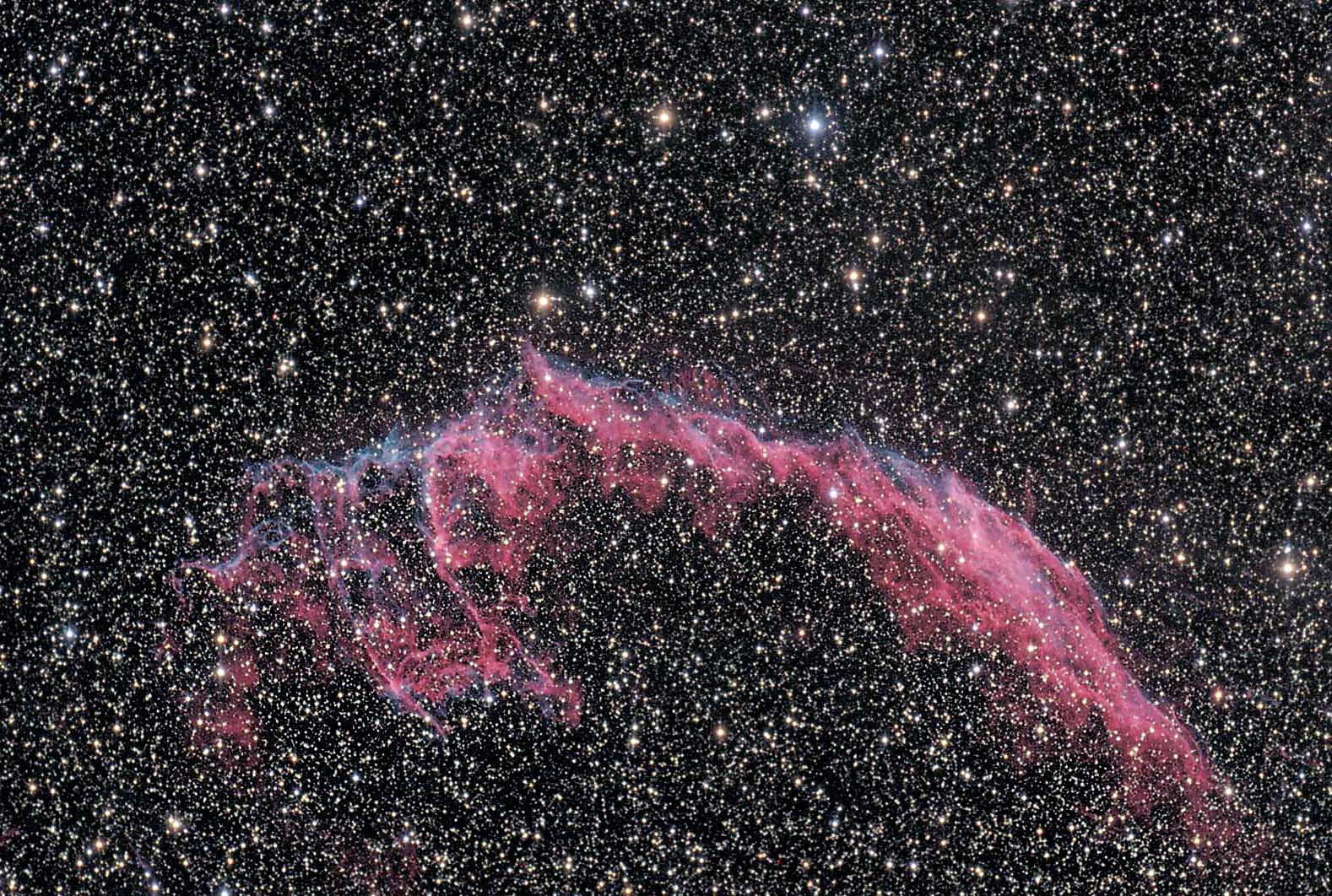|
This is a draft version of my first LRGB and first color image from a dark sky site. I am still struggling with the image
processing of this image in several areas including the color saturation loss from the LRGB process, getting the correct sharpness
in the nebula, and keeping the starfield from bloating without losing star sharpness. Comments and suggestions are encouraged.
"Click on the Image to Enlarge to Full Size"

|
| Both thumbnail & enlargement show artifacts in starfield from the JPEG compression |
Image details: Veil NGC 6992 Imaged Sept 11-12, 2004 @ Lockwood Valley , CA
OTA: Tak FSQ 106N - Mount: AP 1200
Camera: SBIG ST10XME w/ CFW8A filter wheel, and Astrodon Filters
LRGB: Each filter 4 x 10 min. subexposures except blue was only 3 subs
Processing: CCDSoft; Dark & Flat reduction, Hot & Cold pixel repair,
All frames aligned together then resorted by filter, debloomed w/ Wodaski Debloomer plug-in, combined by filter--Photoshop;
Luminace; Levels & Curves, Minimum filter, Unsharp mask on nebula only; RBG; Merge channels, Slight black
point adjustment per channels, Slight levels, Minimum filter of starfield outside nebula; LRGB combine; 50% luminance
opacity, 25% color channel saturation; ImageReady; Compression to medium quality
Lifting the Veil
The Veil Nebula in the constellation of Cygnus, the Swan is one of the
most beautiful and interesting objects in the sky. Deep sky photography using long exposures on film or moderately long exposures
with CCD cameras reveal awe inspiring details of the remnants of this ancient supernova explosion. Catalog number NGC 6992,
a portion of the Veil Nebula is actually expanding debris from the supernova explosion of a star that took place over 5000
years ago. The Veil Nebula is approximately 1,440 light-years away (reported distance has been changing and continues to change
based on recent scientific studies). The picture shows the fine colored wisps of gas which are filaments of shocked interstellar
gas along the shockwave of the expanding supernova remnants. As the expanding supernova material smashes into the gas, the
gas glows and forms the visible wisps of this image. The expanding material hits the gas at a speed of more than 600,000 kilometers
per hour.
Sources: NASA
|
